K
KMS
Well-known member
TURBO TALK – 2 STROKE LIGHTING COILS
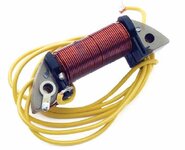
This is a discussion on "grey" areas in regards to turbocharging. I answer many of the same questions every day, one at a time on many confusing subjects that really are misunderstood. I want to help, so, we will open topics to provide accurate information and explain how and why stuff works. This topic is the beginning of a multi-week project to discover a cost effective, reliable and high output electrical solution for 2 stroke snowbikes.<O </O
</O
<O </O
</O
Over the spring and summer, we plan on exploring forced induction solutions for 2 stroke snowbikes (how cool is that!) Currently there are 4 different system platforms that will be explored and tested (2 turbo system and 2 supercharged constructs). To complete these projects we need something first…electrical power.<O </O
</O
<O </O
</O
To fuel these bikes, we will need fuel pressure. That means we need a fuel pump. We could go mechanical or electrical for this. For the time being we have chosen the “path of least resistance”, Electrical. To supply the pump, we will need a coil up to the challenge.<O </O
</O
<O </O
</O
For this project, we pulled in our resources that have helped us in the past that specialize in small size, high yield electrical power generation for the powersports industry. We picked the CR500 to start with (it seems to be the most challenging due to the lack of space and small flywheel). We reviewed some of the aftermarket lighting coils that are currently offered and found that they will not be suitable for the following reasons: low output levels and reliability. After taking a closer look at these products, we found a huge flaw. Cheap steel. It may look shinny, however internally the grade is very low.
<O </O
</O
<O
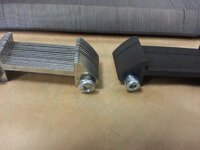
</O
Why does that matter? It matters because the iron core is the base of the entire electromagnetic process. If the core is a low grade, the electrical field will not be strong and the output will be low. To compensate for this, many coil manufacturers will overwind the coil. This will stress and overheat the copper which leads to insulation breakdown and coil failure.
<O </O
</O
So, for me the answer is simple. Use better steel. For this, I spoke with 2 separate engineers that are leaders in the electromotive industry. Both of them reviewed the current cores used. They were shocked by how low the grade was. A low grade steel will “absorb” a high percentage of the field generated. Like putting a metal fork in a microwave, the low grade core will heat up and the system will go south from there.<O </O
</O
<O </O
</O
What do we do? We make the real deal. A core is nothing more than a stack of thin layers of steel (Laminations). So to make a small run for prototyping, here are the steps:<O </O
</O
<O </O
</O
Step one: What material to use? The experts say M19 steel. It does cost more than the overseas stuff, however you only live once!<O </O
</O
<O </O
</O
Step two: How thick to make the laminations? Again with the experts, .014” will generate the highest output. Food for thought, the sample core had .040” thick laminations…possibly a choice for lower production costs?<O </O
</O
<O </O
</O
Step three: Get the stuff and cut it up! I took a CR500 lighting coil core, drew it in AutoCAD, and set the material for laser cutting and heat treating.
<O </O
</O
<O
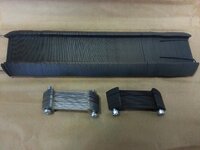
</O
Step four: Assemble the laminations into core stacks. The sample low grade core was .625” tall. Depending on the real estate available, we may go larger here…because size does matter. At .625” we will need about 45 laminations. For reference, the low grade sample only uses 15 laminations.
<O </O
</O
<O
We now send off the M19 laminations and the Low Grade core for winding and output comparison. They will be tested for output at various rpms and I will get back to you as soon as the results are in. Will this work? I have no idea, however may the best core win!
<O </O
</O
<O
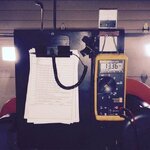 </O
</O
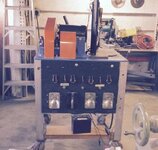
 </O
</O
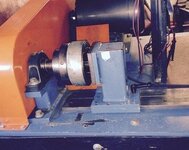
PS. If there are any current lighting coil products on the market that you would like performance tested for the CR500, please let me know. We can toss these into the evaluation process and together we can get the "real deal" output numbers.</O
<O </O
</O
Thanks for reading and questions are always appreciated.<O </O
</O

This is a discussion on "grey" areas in regards to turbocharging. I answer many of the same questions every day, one at a time on many confusing subjects that really are misunderstood. I want to help, so, we will open topics to provide accurate information and explain how and why stuff works. This topic is the beginning of a multi-week project to discover a cost effective, reliable and high output electrical solution for 2 stroke snowbikes.<O
<O
Over the spring and summer, we plan on exploring forced induction solutions for 2 stroke snowbikes (how cool is that!) Currently there are 4 different system platforms that will be explored and tested (2 turbo system and 2 supercharged constructs). To complete these projects we need something first…electrical power.<O
<O
To fuel these bikes, we will need fuel pressure. That means we need a fuel pump. We could go mechanical or electrical for this. For the time being we have chosen the “path of least resistance”, Electrical. To supply the pump, we will need a coil up to the challenge.<O
<O
For this project, we pulled in our resources that have helped us in the past that specialize in small size, high yield electrical power generation for the powersports industry. We picked the CR500 to start with (it seems to be the most challenging due to the lack of space and small flywheel). We reviewed some of the aftermarket lighting coils that are currently offered and found that they will not be suitable for the following reasons: low output levels and reliability. After taking a closer look at these products, we found a huge flaw. Cheap steel. It may look shinny, however internally the grade is very low.
<O
<O

</O
Why does that matter? It matters because the iron core is the base of the entire electromagnetic process. If the core is a low grade, the electrical field will not be strong and the output will be low. To compensate for this, many coil manufacturers will overwind the coil. This will stress and overheat the copper which leads to insulation breakdown and coil failure.
<O
So, for me the answer is simple. Use better steel. For this, I spoke with 2 separate engineers that are leaders in the electromotive industry. Both of them reviewed the current cores used. They were shocked by how low the grade was. A low grade steel will “absorb” a high percentage of the field generated. Like putting a metal fork in a microwave, the low grade core will heat up and the system will go south from there.<O
<O
What do we do? We make the real deal. A core is nothing more than a stack of thin layers of steel (Laminations). So to make a small run for prototyping, here are the steps:<O
<O
Step one: What material to use? The experts say M19 steel. It does cost more than the overseas stuff, however you only live once!<O
<O
Step two: How thick to make the laminations? Again with the experts, .014” will generate the highest output. Food for thought, the sample core had .040” thick laminations…possibly a choice for lower production costs?<O
<O
Step three: Get the stuff and cut it up! I took a CR500 lighting coil core, drew it in AutoCAD, and set the material for laser cutting and heat treating.
<O
<O

</O
Step four: Assemble the laminations into core stacks. The sample low grade core was .625” tall. Depending on the real estate available, we may go larger here…because size does matter. At .625” we will need about 45 laminations. For reference, the low grade sample only uses 15 laminations.
<O
<O
We now send off the M19 laminations and the Low Grade core for winding and output comparison. They will be tested for output at various rpms and I will get back to you as soon as the results are in. Will this work? I have no idea, however may the best core win!
<O
<O
 </O
</O
 </O
</O
PS. If there are any current lighting coil products on the market that you would like performance tested for the CR500, please let me know. We can toss these into the evaluation process and together we can get the "real deal" output numbers.</O
<O
Thanks for reading and questions are always appreciated.<O

